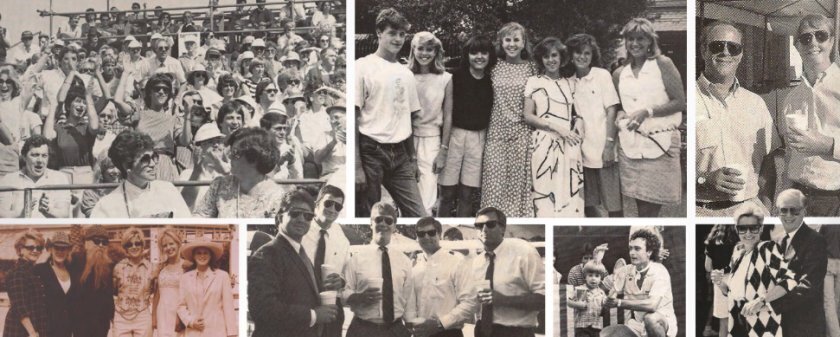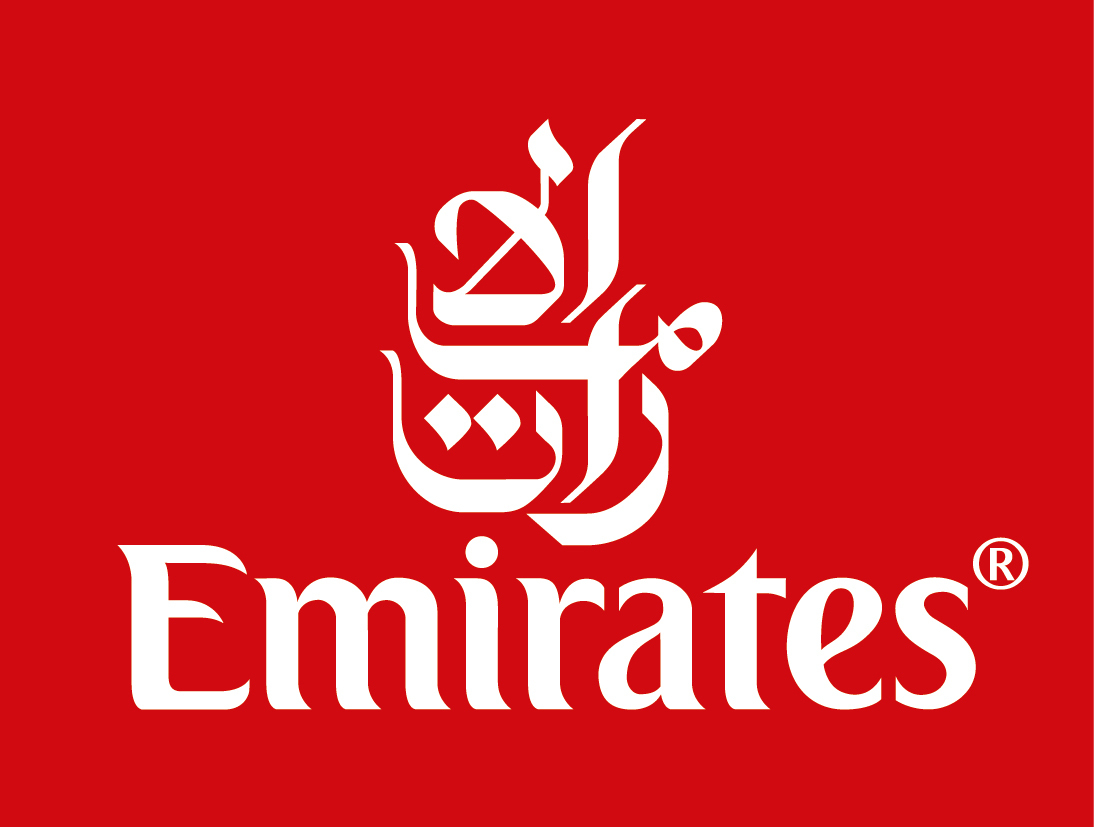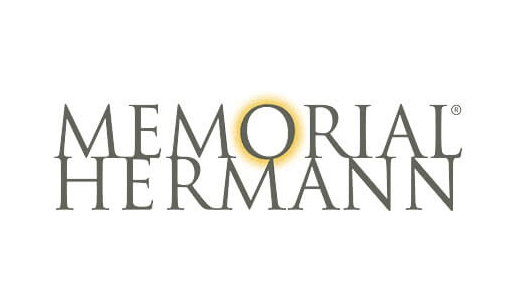1930-40s History
In the spring of 1931, the tradition began. The “tradition would over time become the oldest tennis event in the world and the oldest sporting event in the United States still to be played at its original site. Yet it was born during the depths of one of our country’s most inauspicious eras, The Great Depression. Member Jack Norton, a formidable player in his own right, knew many of America’s top players and recruited them to a spring River Oaks garden party. Since the late 1920s he had arranged for America’s Davis Cup players to train and hold exhibition matches at River Oaks, so they were very familiar with the club’s hospitality. After securing commitments from five of the top 10 US players to compete in the inaugural event. Norton quickly enlisted the aid of the River Oaks tennis “regulars” to put on the first event: palmer Bradley, Arthur Trum, Lewis White, W. Browne Baker, George Bruce, Wilson Saville, Ernie Langston, Lee Brinton, Henry Holden and Charles McLean. The players were put up at the Warwick for $1 per day. Sixty members each bought two season tickets for $5 each. The financial tally after the first event was a $1,500 loss to the club, but the event continued. Ellsworth Vines collected the first winner’s trophy and went on to capture the U.S. Championships (now the US Open) later that summer.
During the first 11 years the tournament was dominated by two men: Hall of Famers Bryan “Bitsy” Grant and Texan Wilmer Allison. Grant would capture three titles and reach two finals while Allison was a one-time winner and four-time finalist. Allison went on to become the tennis coach at the University of Texas. In the pre-war years, all tournaments consisted of a field of 64 players, and it became necessary to fill the field with local and regional players. World War II caused the suspension of the event from 1942-1945.
A “modern stadium” was built for the 1940 tournament, which saw 22-year-old Bobby Riggs earnt he singles title.
1950s History
The 1950’s was the last decade of tennis’ virtuousness. Prize money battles, boycotts and legal struggles were still years away. This decade was thus the end of an era when tennis was played for the sheer joy of the game. As the River Oaks tournament entered the 1950’s, a Veterans Division for players over 45 began. This allowed some accomplished local players to compete with former national champions.
Tony Trabert, one of the most dominant American players of the decade entered the 1955 Tournament as the world’s #1 player. He proceeded to power through the field with the loss of only 2 sets (all matches were 3 of 5 sets). His domination continued throughout the year as he captured Grand Slam singles championships at the French Open, Wimbledon and US Open and doubles titles at the Australian Open, the French Open and US Open. That is quite a remarkable year.
1957 marked the first year that an Australian player competed at River Oaks. Mervyn Rose became the first foreign born player to reach the River Oaks final. The following year Chile’s Luis Ayala also reached the final and ushered in the international dominance at River Oaks that was soon to come in the 1960’s.
The Langston Trophy, which honors the tradition of sportsmanship in tennis, was first awarded in 1957 to Barry MacKay. The award was named in recognition of longtime chairman Ernie Langston who is credited with elevating the tournament’s stature to one of the premiere events in the world.
Ironically that same year it was noted that a player “deliberately” launched a ball over the fence in anger during an early round match. This was cause for considerable anxiety among some of the attendees. If they only knew what was coming … or maybe it’s better they didn’t.
Texan Bernard “Tut” Bartzen captured the final tournament title of the decade as his opponent retired in the fourth set. This was the first of only two finals which ended in a player retirement. Tut would later join Texas Christian University as their men’s coach and have a legendary career lasting 25 years.
1960s History
The decade of the 1960’s was a time of tremendous change in the world of tennis as the amateur era came to an end in ‘68. Here at River Oaks the decade had a much more global presence as players from all parts of the world began to travel to Houston to compete. In ’61 Rod Laver become the first foreign player to capture the singles title at River Oaks. In fact in the first 25 years of the event, only 2 foreign players even reached the final. Yet that would all change in the 1960’s when only 4 American players reached the final. Barry McKay in ’60 and Texan Cliff Richey in ’68 were the only Americans to capture titles. Richey had been a ball boy for the event 11 years earlier.
In ‘62 Rod Laver won his second River Oaks title and his first Grand Slam, capturing all 4 major championships in a calendar year. Following the River Oaks win he commented that in his opinion, River Oaks was the finest tournament in the world with the exception of Wimbledon. Laver was one of the primary reasons why tennis’ open era occurred. After winning his first grand slam Laver turned pro in ‘63. At that time professional players were not allowed to compete in any of the major championships, and yet these events promoted themselves as having the game’s greatest players contending. However Laver, who was the unquestioned best player in the world at the time, was not competing. The pressure over the next 5 years became too great and the slams finally opened to professionals. That decision was validated the following year as Laver again captured all four major singles titles becoming the only player to win two grand slams. Fellow Aussie and longtime River Oaks friend Roy Emerson appeared in 3 finals winning in ‘64. 2014 was the 50th anniversary of his title and we celebrated our 80th event with his 50th anniversary.
In ’67 a young John Newcomb won our event and had perhaps his best year on tour as he also won the singles championships at Wimbledon and the US Open. He was awarded his winner’s trophy here by a young congressman named George Herbert Walker Bush.
In all, our tournament winners in the 1960’s went on to capture 30 grand slam singles and 28 grand slam doubles titles in that decade. Quite remarkable.
The final event of the decade was won by Yugoslavian Zeljko Franulovic as he defeated the very popular Rafael Osuna of Mexico. Osuna was also an exceptional doubles player winning 3 titles from ’67-’69 each year with a different partner, less than 2 months after the ’69 final, he was killed in a plane crash.
After a 13 year hiatus, women’s tennis returned to River Oaks in ’68 as Nancy Richey, sister of Cliff, won the championship giving the Texans a sweep of the singles crowns that year. In ’69 Australian great Margaret Court, winner of 24 grand slam singles and 19 grand slam doubles titles, would own the final ladies single title ever played at River Oaks.
1970s History
The 1970’s began the era of professional tennis at River Oaks. The “open era” of tennis started in 1968 and players were now competing for established prize money. The World Championship Tennis tour arrived at River Oaks in 1972 with a purse of $50,000 and a winner’s check of $15,000. With players like Rod Laver, Jimmy Connors, Roy Emerson and Ken Rosewall competing, the popularity of the tour grew quickly and the purse had more than doubled by 1977.
Tournament Chairmen
1970 – 1972 Ford Hubbard, Jr. 1973 – 1975 Charles R. Swain
1976 – 1977 Richard B. Curran 1978 – 1979 Matt H. Benton
In 1971, Texan Cliff Richey won his second River Oaks title and played the final three out of five set match in tournament history, as beginning the following year all matches would be played under the two out of three set format. En route to the finals Richey defeated Harold Soloman in what became the first “standing room only” crowd in River Oaks’ history. Soloman was a freshman at Rice University and many of his local fans found their way into the stadium for the quarter-final match with Richey. Soloman would go on to win the Southwest Conference singles championship a few weeks later as well as the River Oaks title in 1976.
The ATP World Tour was founded in 1973 and with it, established the standardized world ranking system that is still used today. Romanian Ilie Nastase, a frequent River Oaks competitor, was the first player to hold the tour’s number one ranking. Rod Laver became the tournament’s only four time champion with his victory in 1974.
In 1976, world number one Jimmy Connors was the prohibitive favorite to win the tournament only to withdraw with the “flu” before his first match was played. Unfortunately for some however, the Calcutta had already been held and Mr. Connors had gone for a sizeable sum. Thus, the enactment of the “Connors Rule” was occasioned. In short, you bought him… you own him. Ouch.
Over the past 20+ years I have viewed thousands of photos related to our tournament.
None, in my opinion, capture the essence of the event more than the photo pictured of Bjorn Borg and Rod Laver taken after the 1974 final. At the time, Laver was age 35 and the unquestioned greatest player the game had ever known. Borg was exactly half the age of Laver and mostly obscure outside of the tennis world. And yet that would all change in less than two months when Borg would win the first of his 11 Grand Slam titles and change the face of the tennis and sports world. In the 1960’s while winning two Grand Slams, sports fans the world over began to hear of, and via television see Rod Laver (The Rocket). Through his exploits he was able to bring the already avid sports fan to the game of tennis. Borg however, through his distinctive persona and television appeal, brought the non-sports fan to tennis. His run of 5 consecutive Wimbledon titles from 1976 – 1980 were seen by fans who didn’t know the difference between a backhand and a backboard. He was a global phenomenon and tennis’ first pop icon. And though not known at the time, this photo so beautifully captures the great champion in Laver holding off the young Borg one final time before the passing of the torch. There is a wonderful rhythm of past, present and future champions who move through the sport as their careers blossom and mature. Generations have been able to experience these gifts during the past 80 years of tennis at River Oaks, and to me, this is the quintessential photo of that circumstance.
1980s History
The 1980’s were very much a time of change for professional tennis at River Oaks. The decade began with the tournament being part of the World Championship of Tennis (WCT) Grand Prix circuit cofounded by Lamar Hunt. River Oaks ended its partnership with WCT in 1983 and became an invitational event for twenty four years until our joining of the ATP Tour in 2008. Ivan Lendl captured his first professional title here in 1980 and would go on to win two additional tournaments here in the 1980’s and was part of an unprecedented circumstance in the 1982 final. Lendl faced Argentine Jose-Luis Clerc and as darkness drew closer during the finale, an over anxious referee decided to simply move the match to an outside court that had lights since the stadium court was not lighted at that time. Clerc vehemently opposed the decision and an appeal was made to the WCT office in Dallas. The final ruling was made and Lendl won by default since Clerc refused to move to a lighted court to finish the match.
Tournament Chairmen
1980 – 1984 Fella Knight 1985 – 1990 Doug Dalton
Houstonian Sammy Giammalva burst onto the pro scene in 1981 at River Oaks as a High School senior by reaching the final and falling to world ranked #6 Guillermo Vilas.
Perhaps you might recognize the 1984 description of this inaugural event, “Five hundred of the social elite enjoyed a French Picnic and viewed a montage’ of fashion as dozens of models glided, strutted and danced the criss-cross runways spanning the pool”. That’s right; it was the beginning of the now iconic Tootsies Fashion Show. Though only one fashion show was held in tournament years 1984 to 1988, over 30,000 attendees have since enjoyed this renowned River Oaks tradition.
The 1985 tournament included an unknown 17 year old who exited in the second round. Two months later that same 17 year old Boris Becker was the Wimbledon champion. Many will remember his famous lunging volleys (yes there was a time when players regularly came to the net) and a smile that captured the essence of a young man conquering the tennis world.
1986 and 1987 champion Jimmy Arias commented “If I could play every match on center court at River Oaks, I would never lose”. Night matches made their debut in 1988 though to frigid reaction, literally. The temperatures for much of the week’s evening play were in the 40 degree range.
In a striking example of past success not predicting future achievement, the 1989 tournament rightfully touted that the World Junior Champion Nicholas Periera of Uruguay would be playing. Also competing that same year was a “US junior standout” from California by the name of Pete Sampras whose future would include 14 Grand Slam championships, 64 tournament titles and 286 weeks ranked as the #1 player in the world…who could have known?
1990s History
In my review of the River Oaks tournaments held in the decade of the 90’s one thing seemed to be a constant, it rained a lot. The rain was so bad at the ’91 tournament that plans were made and the site was prepared for a carpet to be laid and matches to be played indoors at the Summit. Fortunately a small window allowed for completion of the event on schedule. The 1992 final, which was won by Bryan Shelton, saw the only Monday final here in the modern era due to rain. An extensive drainage system was developed around the stadium court in 1995 which allowed for a tarp system to be used to protect the court.
Tournament Chairmen
1990 Doug Dalton 1991 – 1994 Johnny Johnson
1995 – 1997 Rex Ross 1998 – 1999 Mike Chadwick
Several of the game’s greatest players returned to River Oak’s in the 90’s for encore performances. Bjorn Borg, Jimmy Connors, John McEnroe and Boris Becker all competed in a total of 10 tournaments highlighted by the 1994 quarter final matchup of Borg and Connors. The match was played on a Friday evening before a standing room only crowd. Ticket scalpers were spotted on the boulevard before the match which was won by Connors in 3 sets. The 1997 event featured Borg, McEnroe and Becker.
Luke and Murphy Jensen arrived at River Oaks in 1995 with their unique brand of tennis and entertainment. The French Open doubles champions from the previous year were a fan favorite and…during a television interview onsite here, Murphy ate an entire bag (21oz.) of M & M’s in one gulp, (it was simultaneously hilarious and slightly disturbing).
At the decade ending tournament in 1999, one current and two future all-time greats came to River Oaks in decidedly different phases of their careers. Rod Laver joined us for the week to receive the Langston Trophy for his incredible tennis career. A four time winner at River Oaks, Rod was the player most responsible for the open era of tennis. He was as remarkable off the court as he was during his legendary career. Also that year the 20 year old duo of Bob and Mike Bryan made their River Oaks debut. Fresh off their NCAA championships at Stanford University they were in the first year of a professional career that has rewritten almost every record in the game, (and they’re not finished as they have just completed their best year on tour at the age of 36).
Other notable facts:
- Houston native Richey Reneberg was the tournaments dominate player capturing two singles titles ’90, ‘93 and reaching one final in ’94. Additionally he and won three doubles ’92, ‘96, ‘99 and was a finalist in ’94 as well as the Langston award recipient in ’91.
- The west and south stadium was redone and expanded prior to the 1992 tournament as well as the ticket offices and press room and television platform.
- Harry Parten retired as Tournament Director in 1993 after 29 years of distinguished service to River Oak Country Club.
- World #10 Boris Becker makes his second visit to River Oaks in ’97.
2000s History
A new century also ushers in a new era for tennis at River Oaks as the tournament becomes a stop on the ATP Tour. Numerous tennis legends come to River Oaks for exhibition matches while a soon-to-be legend reaches the River Oaks final in his only appearance. The return of the Tour late in the decades sees a new tradition born while the greatest doubles team in tennis history begins an impressive run of River dominance.
Tournament Chairmen
2000 – 2002 Mike Chadwick 2002 – 2006 Bill Hurt
2007 – 2009 David Modesett
The 21st century began in grand fashion for the then-named River Oaks International as an 18-year-old and 50th ranked player in the world from Switzerland by the name of Roger Federer made is first and only appearance here. He reached the final that year losing to Magnus Gustafson and by year’s end he would break into the world’s top 25. And the rest as they say is history as he is now universally considered the game’s greatest player.
The brainchild of Chairman Bill Hurt, the special exhibition on Thursday evenings began in 2003 and featured such legends as John McEnroe, Martina Navratilova, Monica Seles and Pete Sampras. In fact, history was made in 2006 when the exhibition match between Sampras and Robby Ginepri was the first tennis match ever broadcast on the internet.
In 2003, the sponsor pavilion is relocated to inside the stadium. An unplayable final in 2004 due to a stadium court that would not dry (literally), led to the only Co-Champions in River Oaks history – Hugo Armando and Jiri Novak. A clay surface change was made in 2005 as we moved from crushed limestone to the sub surface irrigated clay we now enjoy. Then Chairman Bill Hurt and previous Chairman Mike Chadwick were instrumental in leading the effort for that transformation.
A valiant series of matches in 2006 saw Juan Monaco of Argentina, in the span of 24 hours, play over 8 hours of tennis with a 3 hour 45 minute singles semifinal victory, followed shortly thereafter by a 2 hour and 15 minute doubles final loss and then a 3 hour 30 minute singles final defeat the next afternoon.
In the late spring of 2007, a series of events led by Chairman David Modesett allowed us to secure temporarily and now permanently the ATP sanction for the U.S. Men’s Clay Court Championship, bringing it over from Westside in 2008. Houston is the 21st host city for the USTA championship that has been held since 1910.
While both the ROITT and US Clay have their own great records, little time was wasted in forging a new, combined history. With coaxing from ATP Tour staff, the 2008 winners were convinced that River Oaks champions have long celebrated by jumping into the swimming pool after receiving their trophies. The tradition was christened by 2008 doubles winners Rainer Schuettler and Ernests Gulbis.
James Blake, the ROITT winner in 2003 and 2005, reached the 2008 singles final, beginning a run of six straight years with the US represented in the title match.
Later in 2008, Hurricane Ike significantly impacted the Gulf Coast. To aid in the relief efforts, a ticket resale initiative called the Ticket Turnback Program was born and continues today.
On the court in 2009, Bob and Mike Bryan returned to River Oaks and began a 15-match winning streak that included three titles ending with the 2013 finals. In singles, former No. 1 and future Hall of Famer Lleyton Hewitt claimed the title. He is the only champion to not take part in the pool jump, as he was quickly off the airport for a flight to play just days later in Monte Carlo.
2010s History
The tournament settles into its spot as the only clay court event in North America on the ATP Tour. As the tournament grows on the international stage, a number of players make a point to return to Houston annually, creating a close bond between players and the River Oaks community.
Tournament Chairmen
2010 – 2012 David Modesett 2013 – 2014 Mike Chadwick
2015 – 2016 Joe Cleary 2017 – 2018 David Baggett
2019 – Mike McSpadden
The creature comforts the tournament provides – from private housing to the River Oaks hospitality – seems to bring out the best for a number of players throughout the decade.
Juan Monaco returns after that 2006 run to the finals and claims titles in 2012 and 2016, becoming the first two-time winner at River Oaks since James Blake in 2003 and 2005.
Steve Johnson wins back-to-back titles in 2017-18, becoming the first to repeat at River Oaks since Richey Reneberg in 1989-90, and first US Clay champion to defend their title since Andy Roddick in 2001-02.
Other players to see continued success through the decade include a foursome to reach two finals each – John Isner (2013 champion), Jack Sock (2015 champion), Nicolas Almagro and Sam Querrey.
In 2019, 20-year-old Casper Ruud of Norway reaches his first ATP final. In the stands for the match is his father and coach, Christian, the 1996 ROITT champion.
In doubles, the Bob and Mike Bryan are dominant, winning three in a row to start the decade and adding two more to bring their career haul to six US Clay trophies. In the decade, the Bryans played every year except 2012, and they either won the title or lost to the eventual champion in each tournament they played.
The 2016 champions are the first to receive newly commissioned trophies that were created by Thomas Lyte, the English luxury brand best known for being the Queen’s silversmith.
After 23 years overseeing tennis at River Oaks, including the return to the ATP Tour, Van Barry stepped down as Tournament Director after the 2015 event to become Executive Director of the USTA Texas Section. Fortunately, a succession plan was in place, and Bronwyn Greer, the US Clay tournament manager since 2007, took over. At the time, she was just the second woman serving as Tournament Director at one of the ATP’s more than 60 events. She is also just the third Tournament Director in the professional era at River Oaks, after Barry and Harry Parten.
The tournament responds to another devastating storm, this time 2017’s Hurricane Harvey, and does so with the support of its loyal players. With contributions from the Bryans, Isner, Querrey, Johnson, Sock and future champion Frances Tiafoe, the tournament rebuilds tennis courts at Sunnyside Park, a facility used by the Houston Tennis Association for its National Junior Tennis and Learning programs.
2020s History
A global pandemic causes the first pause in play at River Oaks since the second world war. The tournament’s return was quickly met by another challenge, one of the wettest weeks on record. Nevertheless, the tournament only got stronger, attracting top fields while selling out of tickets well before play began.
Tournament Chairmen
2022 – 2024 Cynthia Adkins 2025 Brady Knight
Venue set up was underway in 2020 when the COVID-19 pandemic shut down play on the ATP Tour in March 2020 and forced the cancellation of the 2020 and 2021 tournaments.
Upon its return, the tournament would see three straight US winners, two coming from all-American finals. It was a server’s delight when 6-foot-11 Reilly Opelka defeated 6-foot-10 John Isner in the 2022 final when the two combined to hit 129 aces through the week.
Two years later, in 2024, history was made as the first-ever ATP Tour final between two African Americans was played, with Ben Shelton outlasting Frances Tiafoe in three sets. Shelton’s dad, Bryan, was on hand as his coach, and the 1992 ROITT winner was no doubt able to share some secrets about winning at River Oaks.
The 2023 tournament was one of the most trying in the event’s history. Due to Davis Cup the preceding week, one first round match was held until Wednesday, and rain came before it could be completed. The players – Max Purcell and Daniel Altmaier – returned Thursday and managed to split sets and get deep into a third when rain forced them off court again. Friday was another wet one, but they found just enough dryness to play seven points and complete the match. Theirs was the only tennis played that day.
The second round and quarterfinals were played Saturday, with the semifinals contested Sunday afternoon before a nighttime final that saw Tiafoe claim the title.
In doubles, Purcell won three straight titles, winning in 2022 with Matt Ebden before winning back-to-back titles with Jordan Thompson.
Construction on the Rivers Oaks pool in 2023 relegated the champions’ swim to a kiddie pool outside the fitness center, but the winners still obliged with their customary dip to celebrate their titles.










